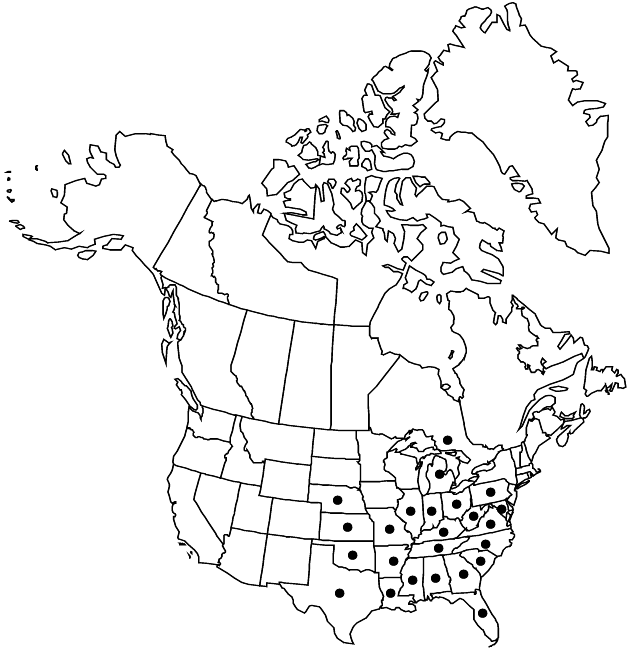Vernonia gigantea
Rep. (Annual) Arkansas Geol. Surv. 4: 189. 1891.
Plants 8–20 (–30+) dm. Stems puberulent, glabrescent. Leaves mostly cauline; blades ± lanceolate, 12–25+ cm × 20–60+ mm, l/w = (3.5–) 4–7+, abaxially scabrellous (hairs awl-shaped), sometimes glabrescent, not or sparsely resin-gland-dotted, adaxially strigillose, glabrescent, not resin-gland-dotted. Heads in corymbiform-scorpioid arrays. Peduncles 1–12 (–20+) mm. Involucres broadly campanulate to hemispheric, 4–5+ × 4–5 mm. Phyllaries 30–40+ in 4–5 series, glabrate, margins ciliolate, the outer lanceovate, 1–2 mm, inner oblong, 3.5–5 mm, tips acute or rounded-apiculate. Florets (9–) 18–24 (–30). Cypselae 2.5–3.5 mm; pappi usually purplish, sometimes stramineous, outer scales 20–25, 0.5–1 mm, contrasting with 35–40+, 4.5–6+ mm inner bristles. 2n = 34.
Phenology: Flowering Jun–Sep.
Habitat: Flood plains
Elevation: 10–300 m
Distribution

Ont., Ala., Ark., Fla., Ga., Ill., Ind., Kans., Ky., La., Md., Mich., Miss., Mo., Nebr., N.C., Ohio, Okla., Pa., S.C., Tenn., Tex., Va., W.Va.
Discussion
Selected References
None.
Lower Taxa
"dm" is not declared as a valid unit of measurement for this property."dm" is not declared as a valid unit of measurement for this property."dm" is not declared as a valid unit of measurement for this property.